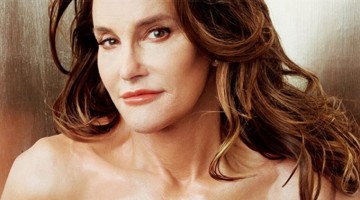The narrative of the Frey Norris Gallery, or the Frey Norris Contemporary & Modern, was Raman Frey had a knack for art and Wendi Norris had a Masters of Business Administration. Now that the name on the door is just Gallery Wendi Norris, it is clear that Ms. Norris’ intelligence also includes international and local contemporary art (though she would credit instinct for her solo successes). It’s sort of lucky she wasn’t overloaded with an art education, because deciding a gallery’s exhibition schedule with minimal knowledge is a rare boon: the viewer gets to learn with the gallerist, and the joy of discovery is palpable. Starting in 2013, Gallery Wendi Norris is putting on a chronological survey from Dada to today, and a survey of Dorothea Tanning. In an effort to reach out to the San Franciscan artist community, the gallery created the San Francisco Artist Award, which gives the winner a show in the gallery. Gallery Wendi Norris is an example of how a gallerist’s curiosity, mixed with intelligent instincts, provokes art exhibitions that visitors and collectors want to see too.
I spoke with Wendi Norris about her gallery’s future:
I really enjoyed your current shows: contemporary artist Chitra Ganesh who spans Indian and Western culture, German Expressionism and psychedellia, as well as a wider variety of myths; and Suzanne Husky’s green anarchist film. I’m particularly a fan of Husky’s work. It’s always nice when art is made by a woman but the viewer might not know it.
The art historical work that we’re doing here at the gallery is very important and informs so much of what I’m doing at a contemporary level. Chitra Ganesh’work can readily be shown alongside our historical artists like Victor Brauner’s drawings from the 1930s or Dorothea Tanning’s soft sculptures from the 1970s. My artists really appreciate the fact that I have this awareness and hands-on experience with some of the most important artists of the 20thcentury. Because I work with historical material, at times altering legacies, it makes me mindful of how I’m dealing with contemporary artists and hopefully it enables me to give better counsel. I think I help to be selective and thoughtful in how they’re building their careers. That’s one of the best things about doing what I do, helping affect how an artist is viewed in a larger context.

Chitra Ganesh, “Transmission”, 2012, mixed media on board (site-specific wall installation), 84 x 120 in. Image courtesy of the artist and Gallery Wendi Norris, San Francisco.

Chitra Ganesh, “Rose”, 2012, mixed media on paper, 60 x 40 in. Image courtesy of the artist and Gallery Wendi Norris, San Francisco.
In terms of an art historical legacy, or lack of success, is that the appeal to you to become involved with a foundation like Dorothea Tanning’s?
Tanning was such a strong artist her work is included in over 50 (and growing) museum collections, from MOMA, to the Tate Modern, to the Met. Of all the artists I’ve worked with historically, she had the best understanding of how to control her career. She knew that she had to save certain works for museum shows or for museum acquisitions. But Tanning, and her husband Max Ernst, lived purposefully outside of art center, in places like Arizona and France, to be able to stay true to their work, among other things. This may have adversely her career with the art world at large.
The upcoming exhibit of Dorothea Tanning, entitled “Unknown but Knowable States” shines a light on the ‘60s and ‘70s, a period that’s not very well understood. People look at this body of work and think, “erotic, sexually charged.” Well, it is some of that, but that’s not at all the essence of what she was trying to do. She was really trying to break into unexplored places that were somewhat fearful for her.
Tanning’s solo show is the gallery’s first departure from showing two artists at the same time. Are you you moving away from dual exhibitions?
I believe the space lends itself well to two simultaneous solo shows. I like to keep it fresh and mix it up though. The Tanning show that opens in January will take the entire 5,000 square feet of exhibition space, but then in March we’re going to open with one solo show of a different artist, which will only be in part of the gallery. Often times we pair artists, not because of the space, but because it fosters more of a dialogue. Somebody could come in wanting to see the Chitra Ganesh show, but be surprised by Suzanne Husky, the 2011 San Francisco Artist Award recipient.
Suzanne’s been a part of the Bay Area art community for some years now, but never has had a solo show in a gallery and been exposed to a broader collector base. With this show, Suzanne had her very first price list and sold her first piece of art. It made me cry.

Amir H. Fallah, “Explosions That Are Built To Spill”, 2012, acrylic, oil, ink, pencil, and collage on paper mounted to canvas, 96 x 72 in. Image courtesy of the artist and Gallery Wendi Norris, San Francisco.
So far, doing your own thing has really been a success.
It’s going very well. I have opportunities to work with many of the artists I want to show and am working on building some important private and institutional collections.
In your last interview with SFAQ you seemed incredibly conscientious of the needs of your clients, more so than your average gallery owner. How do you attune what you show at Art Dubai versus Art Basel?
There are so many variables that go into planning an art fair. It’s not just how you lay the booth out, but which artworks you’re bringing and why. In a place like Dubai, the market really is eager for new things, but you also have to be sensitive to cultural issues, i.e., no nudity.
I also like to blend something that’s familiar with something that’s unfamiliar. Collectors are more comfortable with what they know or think they know. It gives them a sense of confidence. That’s why it can be easier to sell a pricey Warhol than a $5,000 piece by an unknown artist.

Kelly Barrie, “Plank Ladder”, 2010, archival light jet print, edition of 2, 105 x 74 in. Image courtesy of the artist and Gallery Wendi Norris, San Francisco.

Kelly Barrie, “Reclaimed Sewer Pipe”, 2010, archival light jet print, edition of 2, 74 x 110 in. Image courtesy of the artist and Gallery Wendi Norris, San Francisco.
Is there a difference between New York and San Francisco taste?
I don’t think it’s a secret that a lot of the good collectors in San Francisco will go to New York to buy. Bay Area collectors have more confidence on average, and they don’t need to wait for any specific endorsement of an artist before they are supporting them. One thing that I like about San Francisco is that there is a fresh, experimental, and collaborative art scene. Places like Queens Nails, Kadist, and the Wattis Institute have a bit more San Francisco flavor, and some of that trickles east, thankfully.
What are some of the things that you would say are San Francisco flavor?
The Mission school style. A distinctive line. Street art. New Media.

Tomoko Konoike, “Donning Animal Skins and Braided Grass”, 2011, mixed media sculpture; preview at Higashiagano-forest, Saitama, 46 x 21 1/2 x 125 in. Image courtesy of the artist and Gallery Wendi Norris, San Francisco.
It seems that much of the work you show falls into categories of psychological and spiritual themes or social and ecological issues. Is there a holistic thesis to the gallery?
You’re right, but do I have a pithy statement for that? No. I think it emulates from who I am, I’m very politically engaged and active. I care about the world, I’m a mother, I have lived and traveled extensively overseas. Essentially, I need to be moved by the art and the artist. The work can’t just look pretty and it can’t just be conceptually smart.
Now that I’m solely responsible for curating, I’m very focused on shaping the program so that it seamlessly incorporates work that starts in the 1920s through to today. I think I’m going to go back a step from Surrealism and start with Dada. And I’m integrating a few new artists that will help to start tying it all together. I’m excited about the new artists on our horizon—stay tuned.
It doesn’t have to be pithy, but you are now the captain of your gallery and it gets to be what you care about, the Wendi Norris vision. The thesis is what you care about.
What’s the difference between me and the other gallery owners that I know? I don’t have the art historical chops or CCA curatorial vision that Jessica Silverman has. I don’t come from an art historical legacy like John Berggruen. I’m pretty much an outsider I don’t have any preconceived notions of what I think art should be or not. I like to talk about contemporary art theory, but I don’t let it inform my actions. I want to be as authentic as possible, and I encourage my artists to do the same.
I often refer to myself as a matchmaker. When I’m looking at a body of work, people or institutions instantly come to my mind as the right stewards for the work. I have a pretty good accuracy ratio.

Kate Eric, “Never Even”, 2011, acrylic on canvas, 64 x 200 in. Image courtesy of the artist and Gallery Wendi Norris, San Francisco.

Kate Eric, “Boxers 9”, 2011, acrylic on paper, 29 x 21 in. Image courtesy of the artist and Gallery Wendi Norris, San Francisco.
Being overly wrapped up in art history frequently scares people off from art. Sometimes going with what feels right can welcome more people in.
I learned a long time ago that I really like people who know what they don’t know. In the art world, a lot of people pretend that they know everything, and you just possibly can’t. You can do your best to keep abreast of everything, but sometimes my clients or artists are the best people to educate me. I think it’s refreshing when people are not trying to pretend too much. I like to keep it real. That has served me really well.
In contemporary art there is almost always a reference specific to a culture or time period that a viewer may not be familiar with. When you show a lot of international work, I imagine there’s a lot to be lost in translation. How do you deal with work that has important components to its meaning that people might not recognize because it’s unfamiliar?
I love to educate people. My hope is that at least there’s something aesthetically pleasing, or there is some hook in it that will draw them in enough to be interested. We have staff training meetings before every show, and the interns attend it as well. It’s important to me that gallery visitors can speak to anyone hereabout the Hindu or Greek mythological references in Chitra’s work, for example.
Art is a nice way to have cross-cultural communication. It’s something where you can have common ground and appreciation, or even disagreement. But if it’s too foreign, if it’s too indigenous, I think it’s something that I am less interested in showing. There are a lot of great artists that I’ve seen in other parts of the world that I don’t think would translate very well across markets. A theme that runs throughout what we do is hybridity—both culturally and aesthetically. I am consciously trying to find art that transcends geographies, time, and materiality.
“Chitra Ganesh: Flickering Myths” and “Suzanne Husky: Shovels, Physiocrats, and the Light Footed Heavy Souls” are on view at Gallery Wendi Norris through December 22.
-Kendall George




